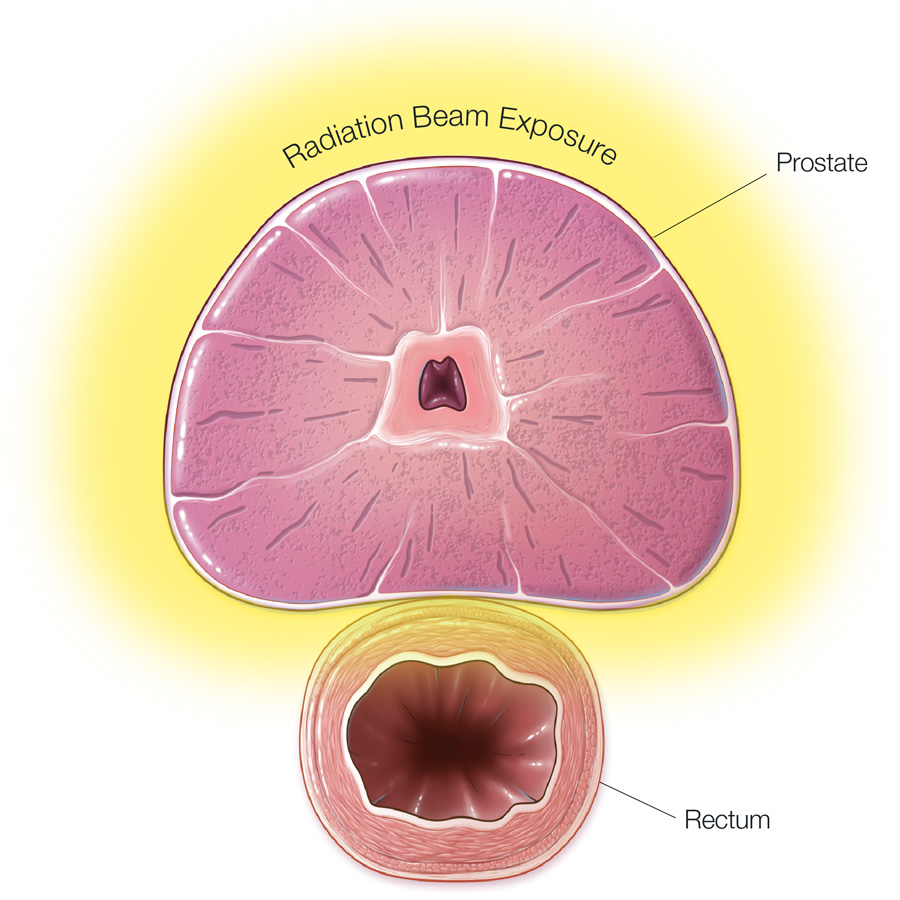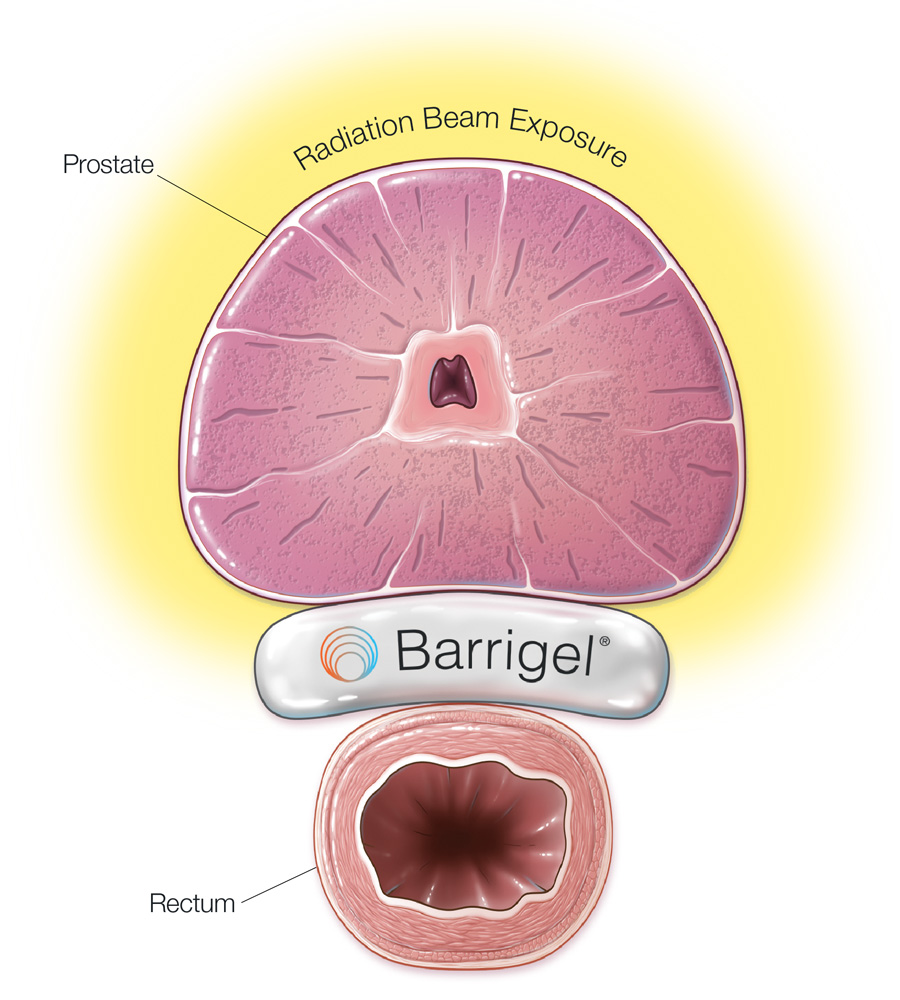Barrigel

Using a Rectal Spacer to Minimize the Side Effects of Prostate Radiation Therapy
RADIATION THERAPY, a standard form of care for treating prostate cancer, uses energy beams to destroy and stop the spread of cancer cells.
These high-energy beams can reach and negatively affect healthy tissue surrounding the prostate.
Due to its close proximity to the prostate, the rectum is the primary organ at risk for radiation exposure.
Possible bowel complications from unwanted radiation exposure to the rectum may include:
SHORT-TERM:
- Needing to have a bowel movement more often than usual (bowel incontinence)
- Diarrhea
- Loose stools
- Hemorrhoids
LONG-TERM:
- Inflammation of the rectum (radiation proctitis)
- Rectal bleeding
- Narrowing of the rectum
- Hemorrhoids
- Chronic diarrhea
- Development of an ulcer in the rectum

Barrigel® Hyaluronic Acid Rectal Spacer
It can help minimize prostate radiation side effects by temporarily positioning the rectum away from the prostate.
When inserted, Barrigel creates space between the prostate and the rectum, moving the healthy organ out of radiation beam exposure.
A Personalized Fit
Barrigel remains soft during insertion, allowing your doctor to sculpt the gel in place to create an optimal fit for your body.
Your doctor will use imaging technology called transrectal ultrasound (TRUS) during the procedure to sculpt the spacer to your anatomy. Unlike PEG Hydrogel spacers, Barrigel can be viewed clearly on ultrasound. This added visibility during insertion provides your doctor greater control and precision over the placement of the spacer.
Long-Term Safety
Hyaluronic acid is a substance naturally present in the human body. Highly compatible and fully absorbable by the body, it is a natural substance used in many common medical procedures.
What to Expect – The Procedure
- Spacing procedures are performed in hospitals, outpatient clinics or doctors’ offices prior to the start of radiation treatment.
- Barrigel may be implanted at the same time as fiducial markers – small markers placed in your prostate to help your treatment team line up the radiation beams.
- The procedure is typically performed in under an hour, and may be performed under local, regional or general anesthesia.
- Following the procedure, you can expect to be monitored in recovery before being discharged.
- Most patients continue with normal daily activities shortly after the procedure, although your doctor may ask you to refrain from heavy lifting and strenuous physical activity for a few days.
